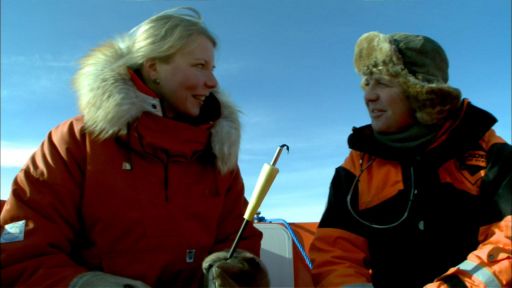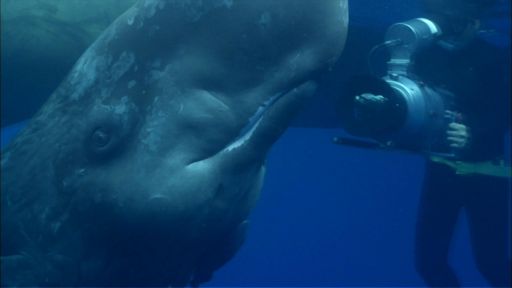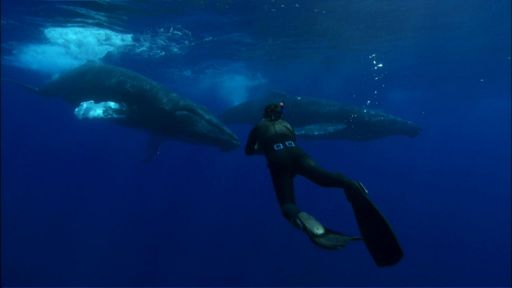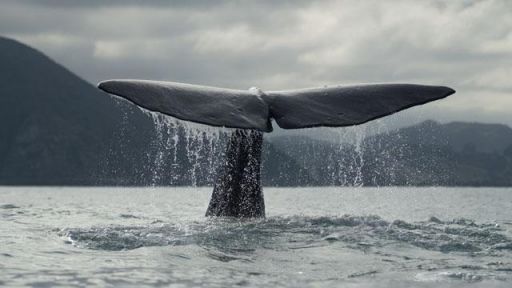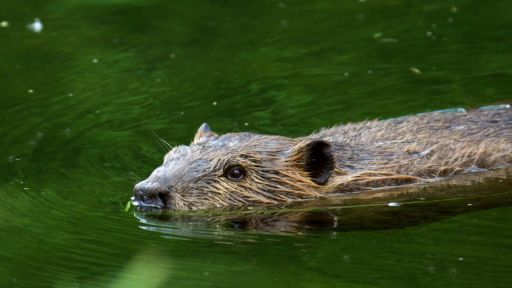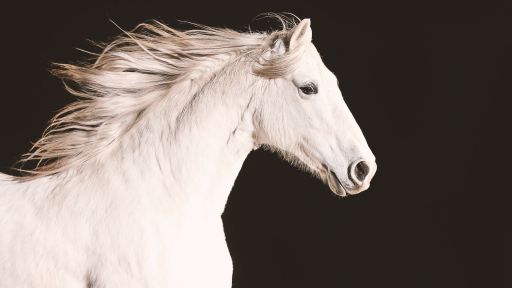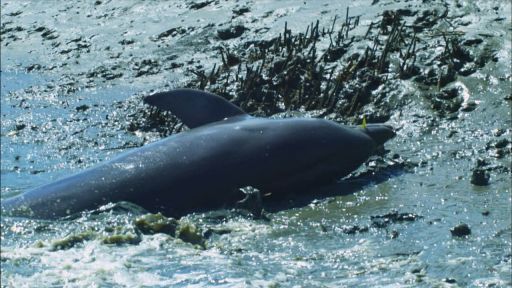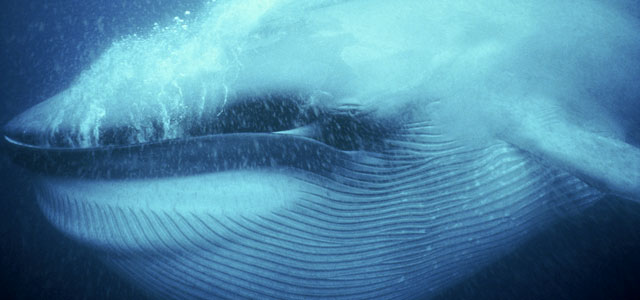
Class: Mammalia
Order: Cetacea
Suborders: Mysticeti and Odontoceti
The primary difference between the two suborders, Mysticeti and Odontoceti, has to do with the whale’s feeding hardware. Whales in the Mysticeti suborder have baleen plates that serve as a filter-feeding system, while marine mammals in the Odontoceti suborder—which includes dolphins and porpoises as well as whales—have teeth.
Size and weight:
Different species of whales vary drastically in terms of both size and weight. Baleen whales in the Mysticeti suborder are generally larger than those of the Odontoceti suborder. The Mysticeti group includes the blue whale (Balaenoptera musculus)—the largest animal ever to live on the planet. The species can be up to 100 ft long (30m), and weigh as much as 150 tons (136 metric tons)—approximately 300,000 lbs. The sperm whale (Physeter macrocephalus) is the largest toothed-whale, reaching up to 70 ft (21m) in length and 59 tons (54 metric tons) in weight. The smallest baleen whale is the pygmy right (Caperea marginata), which averages a length of only 20 ft and a weight of 4 tons (6m/3.6 metric tons).
Physical Features:
Whales resemble fish because of their fins and hydrodynamic bodies, but have far more in common anatomically with other mammals. Somedistinct physical characteristics include:
Baleen: Also known as whalebone, baleen is a filter-feeder system inside the mouths of whales in the Mysticeti suborder. Plates of keratin grow from the gums of the upper jaw. When the whales feed, they take in large amounts of food-rich water and then use baleen to filter out the water while retaining krill. Baleen is made of keratin, a substance also found in human fingernails and hair. (Baleen is only found in select species of whale.)
Blubber: Blubber is a thick layer of fat under a whale’s skin that helps the warm-blooded animal maintain its body heat under water.
Rostrum: The rostrum is an animal’s beak or a beak-like part of its face. In a whale’s anatomy, it refers to the upper jaw.
Dorsal Fin: A fin located on the back of a wide-variety of aquatic animals including all marine mammals. Its primary purpose is to help the animal maintain balance while it swims.
Pectoral Flippers: The pectoral flippers are the whale’s forelimbs. The flippers have skeletal elements similar to those of terrestrial mammals although, externally, they resemble fish fins.
Flukes: Flukes are the tail fins of whales. Flukes are flat and are responsible for propelling the whale through the water.
Blowhole: Blowholes are nasal openings located at the top of a whale’s head. Similar to nostrils in other mammals, blowholes are used by whales to expel carbon dioxide, mucus, and nitrogen, and to inhale oxygen which is then sent through the trachea to the lungs. After inhalation, blowholes are sealed with a water-resistant muscular flap. Baleen whales have two blowholes while toothed-whales have only one.
Diet:
Mysticeti whales rely on their baleen to feed on relatively small aquatic organisms. Their diet primarily consists on fish, krill, and plankton. Toothed whales are better equipped to grab larger, individual prey animals like fish, squid, and other invertebrates. Some species in the Odontoceti suborder have been known to even eat seabirds and smaller marine mammals.
Geography and Habitat:
Whales are found in all of the world’s oceans. Species often breed and raise calves in warmer tropic or sub-tropic waters, and then migrate to cooler waters at or near the poles to feed. Certain species, like bowheads—that are found exclusively in the Arctic—have a far more limited geographical range.
Lifespan:
The exact lifespan of whales is not known, but it has been estimated at anywhere from 30 to 200 years of age. Bowheads are thought to have an incredibly long lifespan, reaching ages of 200 years or more.
Breeding and Social Structure:
Social behavior varies depending on species, but most whales spend time in groups, primarily during periods of migration. When in groups, whales communicate with each other in a variety of ways including posture, touching, spouting, and above-water movements like breaching and lobstertailing—slapping its tail fluke on the water’s surface. While humpback whales are known for their “songs,” most whales use a variety of vocalizations for communicative purposes.
Reproductive habits also vary from species to species, but on average, mature whales breed every two or three years, with an incubation period of about 9 to 15 months. After giving birth to calves, lactating mothers nurse the babies from nipples concealed in abdominal mammary slits. Calves can swim as soon as they’re born and typically stay with their mother for a year or so.
Risks:
Small or young whales are susceptible to larger ocean predators, including orcas, but whales are most threatened by human activities. Whaling for meat, baleen, oil, and blubber decimated whale populations—particularly after the industry took-off in the 19th century. It wasn’t until 1982 that hunting was officially prohibited by the International Whaling Commission. However, whaling still occurs, hurting current whale numbers. Although some whale populations are recovering, damage to their habitat, caused by pollution and changes in ocean temperatures that negatively impact food sources, remain major threats to the animals.
Additional Facts:
- The word cetacean comes from the Greek word for whale, ketos.
- The scientific suborder’s name, Mysticeti, most likely derived from the Greek word, mystakos, meaning moustache, possibly referring to the baleen plates attached to the whale’s upper jaw.
- Carl Linnaeus humorously gave the blue whale the scientific name Balaenoptera musculus. The first word refers to the whale’s dorsal fin (“whale wing”), and the second, musculus, means “little mouse.”
- Sei whales are among the fastest of the baleen whales, reaching speeds up to 34.5 mph.
- Most species of toothed whales use echolocation to navigate the ocean. No baleen whales are known to have this ability.
- During the embryotic stage, baleen whales develop tooth buds. However, these tooth buds disappear before birth.
- The famous narwhal has just two teeth: one in its mouth, and the other jutting out from the front of the male’s head. This unusual protrusion is why the narwhal is nicknamed “unicorn of the sea.”
- Whales do not breathe reflexively. They must make a conscious effort to come to the surface to breathe in air.
- Like all mammals, whales have body hair, and nurse their young with milk.
- Also like all other mammals, whales are warm-blooded. They maintain a temperature around 98-99 degrees Fahrenheit—close to that of humans.
- Whales do not have tear ducts but they do have glands near the eyelid that release an oily substance to lubricate and clean the eye.
Whale Species
Blue Whale (Suborder: Mysticeti)
The Blue whale (Balaenoptera musculus) is named for its mottled blue-gray color. Its underside can have a yellowish hue due to the micro-organisms, known as diatoms, which attach to that area of its body. The blue whale, like the humpback, has ventral pleats—creases that run vertically down the underside of a whale’s jaw all the way to its stomach. When feeding, the ventral pleats expand like an accordion to accommodate ahuge amount of food-rich water. This adaptation enables the blue whale to acquire and consume approximately 4 tons (3.6 metric tons) of krill daily. In addition to its enormous size, the blue whale is fast, with the ability to cruise between 5 and 12mph (8-19kmph). In an excited state, the whale can reach speeds of up to 20mph (32kmph). The species produces the loudest and lowest sounds made by any animal—180 decibels and 10-20 hertz—and can be heard underwater for hundreds of miles.
Bowhead Whale (Suborder: Mysticeti)
Living exclusively in the Arctic, the bowhead whale (Balaena mysticetus) has distinctive adaptations to withstand its cold environment. It’s named for its enormous curved upper jaw—which accounts for almost a third of its body length. It relies on its huge skull to smash through ice that covers northern ocean waters. To stay warm, the bowhead has 17-19in (43-50cm) of blubber—the thickest blubber layer of any whale. The bowhead has a dark body with a conspicuous white spot on its chin as well as a white “penduncle patch” on its tail. As the whale ages, its tail grows increasingly whiter. Analysis of one amino acid in the whale’s tissue is revealing astonishing information about their age, leading to estimates that some individuals may be over 200 years old.
Gray Whale (Suborder: Mysticeti)
Instead of dorsal fins, the gray whale (Eschrichtius robustus) has a prominent hump on its back, followed by 6-12 knuckles or small bumps. The whale has dark skin speckled with white and gray patches, barnacles and whale lice. Like other baleen whales, long-term relationships between gray whales are rare, but the whale migrates in pods, swimming 12,430 miles (20,000 km) from northern Pacific waters near Alaska to their breeding and wintering territory off the Mexican coast. Unlike most whales, gray whales are bottom feeders—the animals swim sideways on the ocean floor with their mouths open, then expel sand and water through their baleen without releasing the small crustaceans and tube worms they have scooped up.
Humpback Whale (Suborder: Mysticeti)
The humpback (Megaptera novaeangliae) has bumps around its head and mouth, each sprouting a single hair. Scientists speculate that these hairs may help sense movement in the water. The whales are unusually active for their size: they lobtail, slap the ocean surface with their flippers, and swim on their backs with flippers akimbo. Most impressive, humpbacks can propel themselves completely out of the water when breaching. Humpbacks are best known for singing, which occurs in all-male groups. Their distinct songs can travel for thousands of miles across an entire ocean basin and are communally improvised by large groups of whales from one year to the next.
North Atlantic Right Whale (Suborder: Mysticeti)
The right whale’s (Eubalaena glacialis) head takes up approximately a quarter of its body, and its blubber accounts for about 40% of its weight. This high concentration of fat, as well as the whale’s relatively friendly demeanor, made it an easy target for whalers (who named it for being the “right” whale to hunt). The whale has a black body with distinctive patches of rough skin known as callosities. Each whale can be individually identified by the distinct pattern of their callosities, barnacles, and whale lice on its head. This species of whale has no dorsal fin. The whale feeds by skimming, swimming with a slightly open mouth to catch zooplankton in their baleen. The right whale has the longest baleen of any whale in the Mysticeti suborder.
Sperm Whale (Suborder: Odontoceti)
Besides being the largest of the toothed-whales, the sperm whale (Physeter macrocephalus) is also the most sexually dimorphic: the male can be up to 30 tons heavier than its female counterpart. The whale has the largest brain of any animal, weighing in at around 17lb (7.8 kg) and has the most asymmetrical skull of any animal. Its huge head also houses an oily fluid called spermaceti (after which the whales were named), once used for ointments and candles. Scientists are still unclear what purpose spermaceti serves, but it may help with echolocation or in adjusting its buoyancy for deep dives. The sperm whale spends most of its time in deep water, hunting animals like large squids that live at extreme depths. To reach its prey, a sperm whale can dive as deep as 3280 ft (1km), and stay submerged for over an hour.

